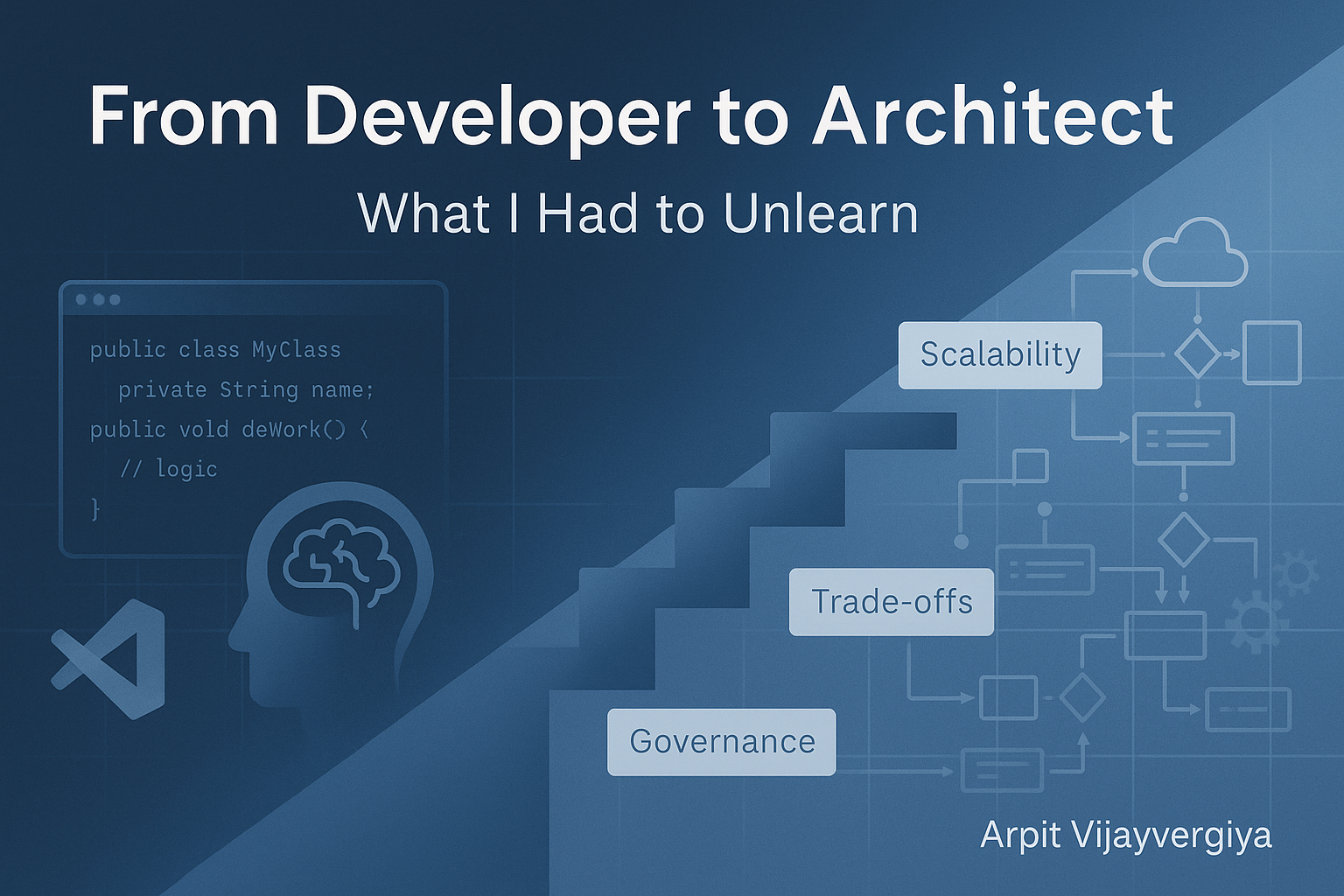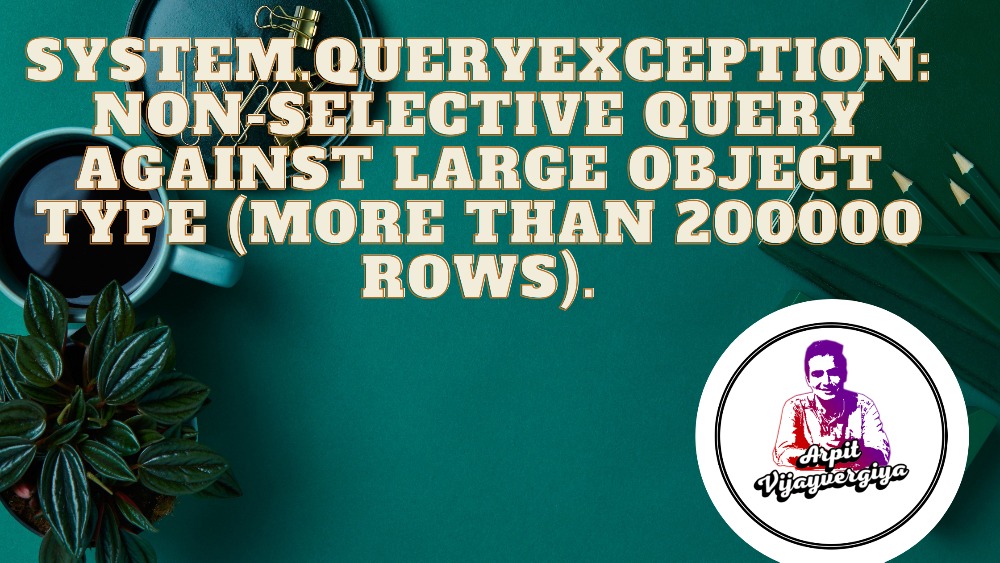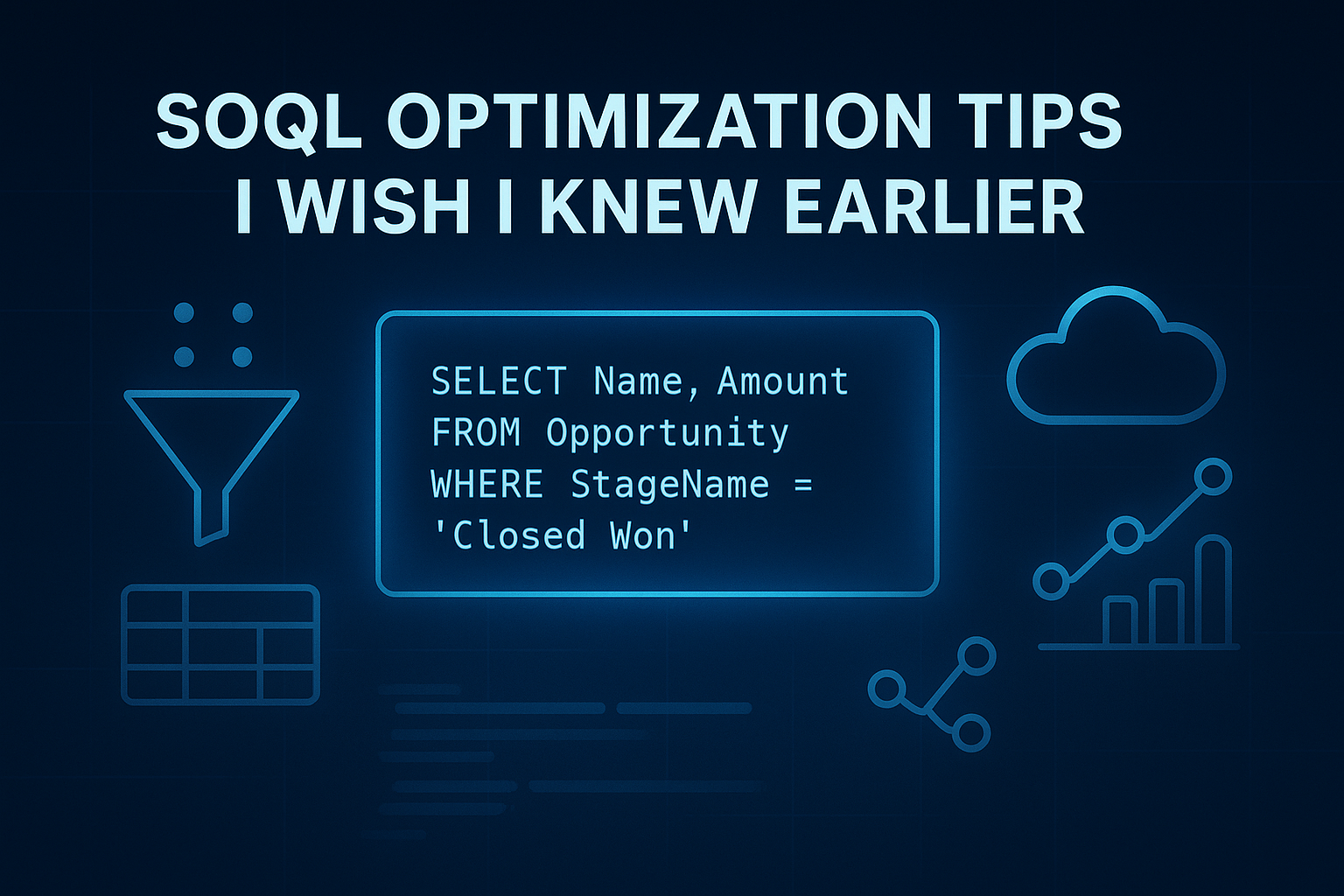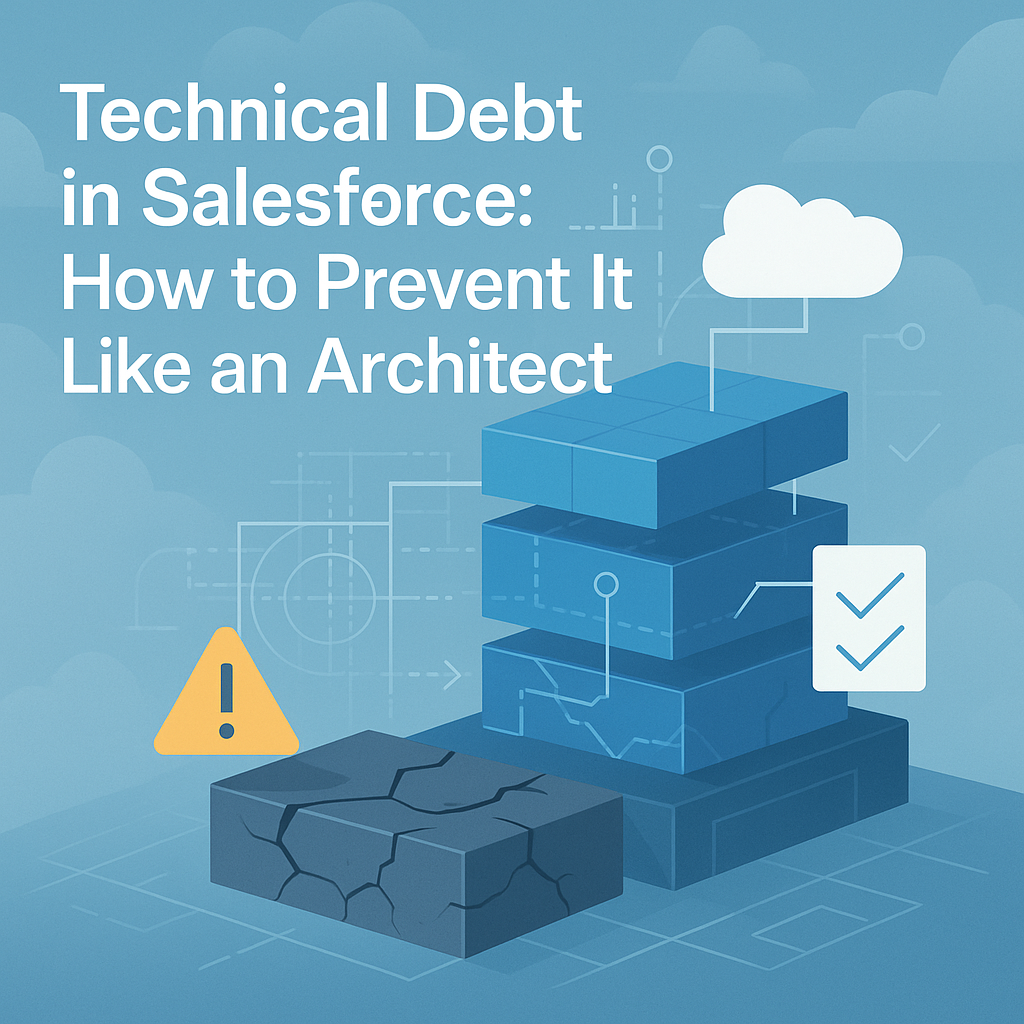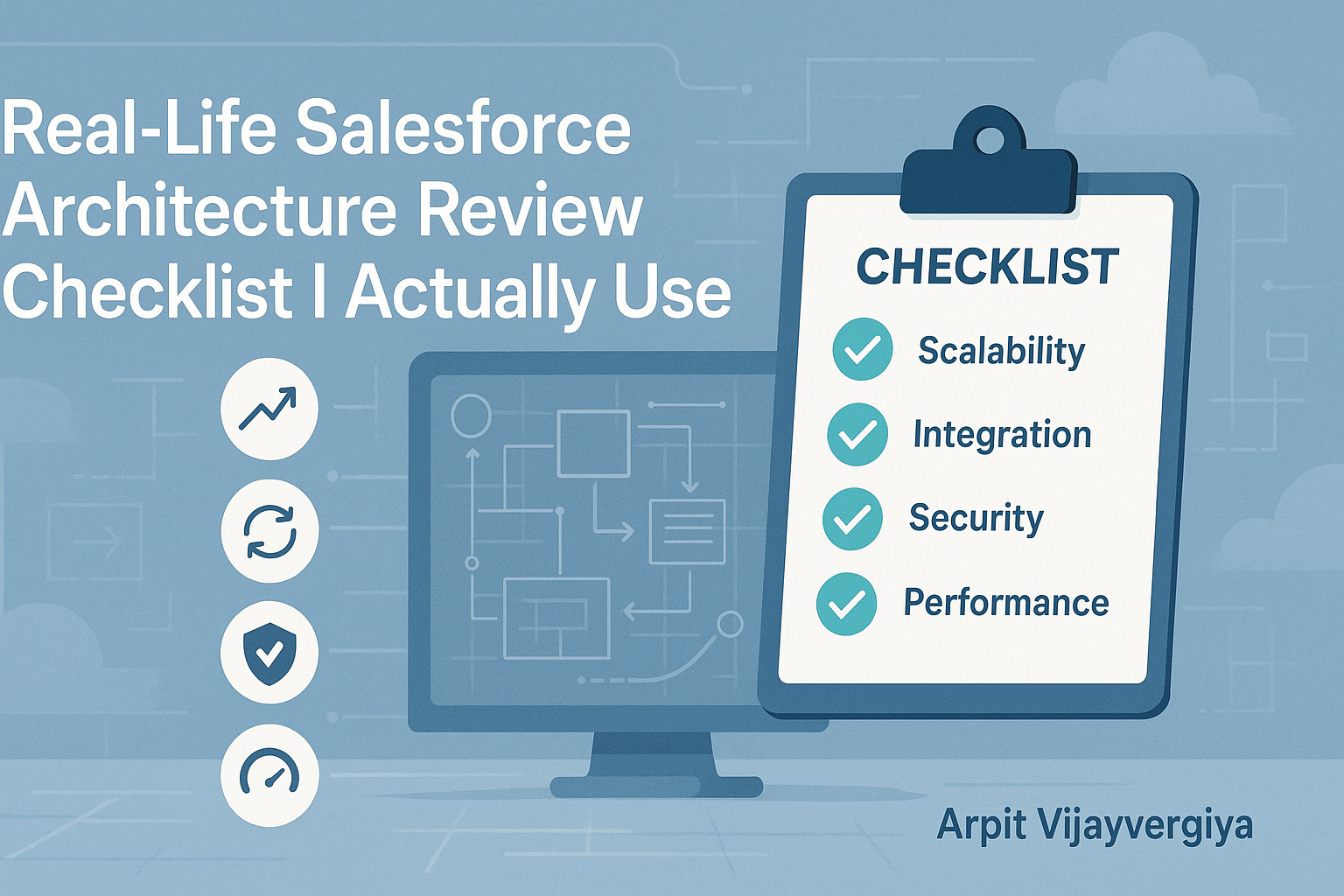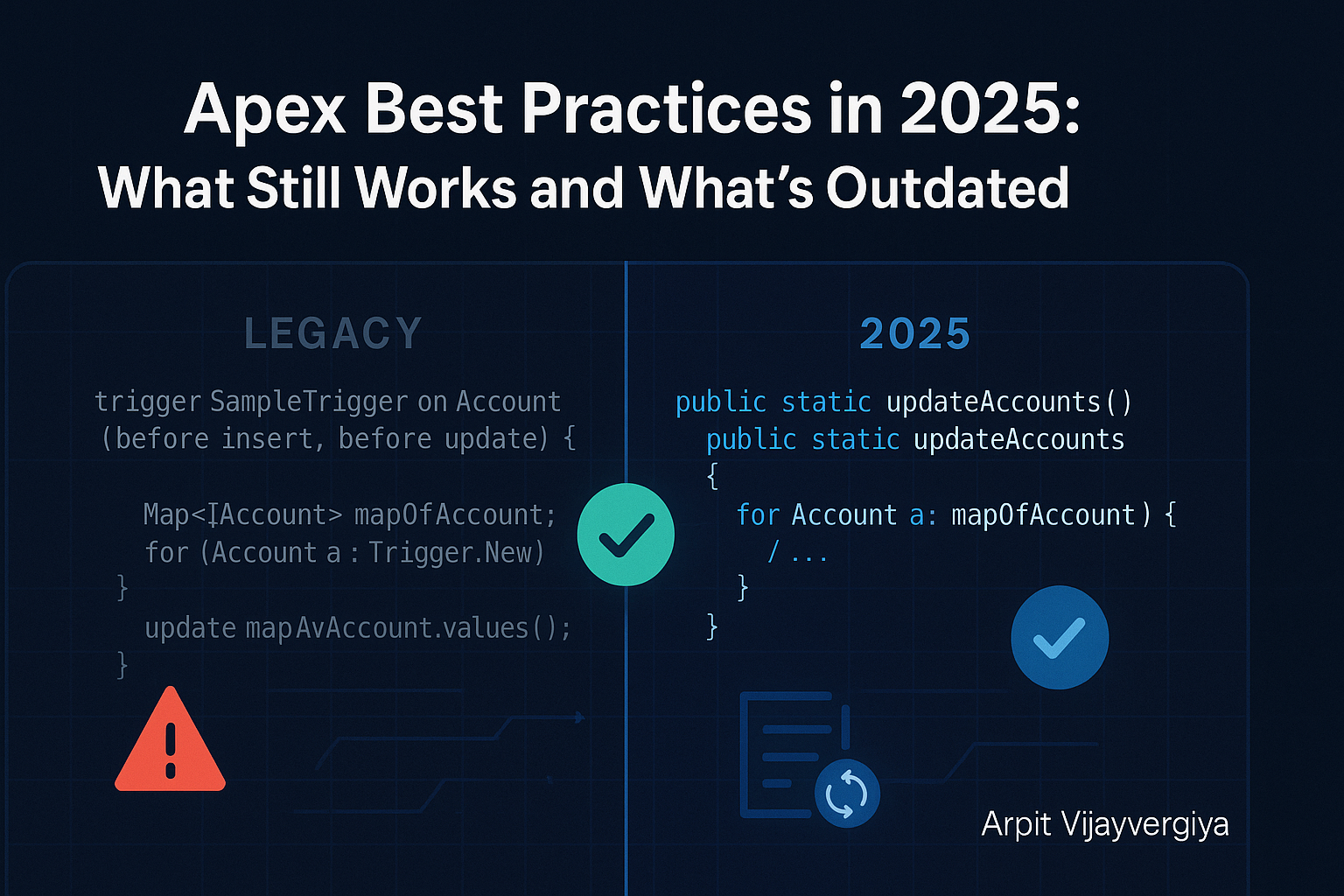How to become a Salesforce Architect , From developer to Architect,
🎯 Introduction
When I started my Salesforce journey as a developer, I believed that mastering Apex, SOQL, Flows, and Lightning Components would be enough to grow.
And for a while… it worked.
But as I transitioned toward becoming a Salesforce Architect, I hit a wall — not because I didn’t know enough, but because I was carrying habits that no longer served me.
This post is a raw, honest reflection of the 5 key things I had to unlearn to go from a solution builder to a systems thinker.
Let’s get into it. 👇
🚫 1. “I can build it faster myself.”
As a dev, I thrived on getting things done quickly.
One user story, one Apex class, one Flow at a time.
But as an architect, speed isn’t the goal — alignment is.
📌 What I had to unlearn:
- Jumping straight into the solution without asking “Should we even build this?”
- Thinking developer productivity equals project success.
🔁 What I do now:
- Spend more time in discovery.
- Push back when needed.
- Empower others to build, review their approach, and ensure long-term maintainability.
🙃 Fast is fun. But scalable is sexy.
🚫 2. “Code is the ultimate power.”
Back then, I thought if I knew Apex well, I could build anything.
And I did — validation logic, workflow-like triggers, even scheduled jobs to update fields.
Then came:
- Duplicate logic in Flows
- Broken dependencies in tests
- Admins are unable to maintain it
📌 What I had to unlearn:
- Defaulting to code as the best solution
- Thinking that declarative tools were “less powerful”
🔁 What I do now:
- Always follow the “Clicks before Code” principle
- Document where automation lives (yes, even that one field update!)
- Design solutions that Admins can debug without raising a Jira
⚖️ Pro Tip: A great architect values low-code governance as much as Apex elegance.
🚫 3. “My job ends with the feature delivery.”
As a dev, my checklist ended at “Tested & Deployed.”
Job done.
Next ticket, please.
But as an architect, I had to expand that lens.
📌 What I had to unlearn:
- Thinking of success as “code is working”
- Ignoring user adoption, training, and support
🔁 What I do now:
- Ensure enablement plans are in place
- Define ownership: “Who owns this post-launch?”
- Ask questions like: “What happens if this process fails at scale?”
🛠️ You’re not just building features. You’re building a business process, a habit, and trust.
🚫 4. “More features = better solution.”
I used to impress clients with:
- Extra fields
- Dynamic forms
- Automated emails
And they loved it… until it became overwhelming.
📌 What I had to unlearn:
- Believing that adding features means adding value
- Designing for edge cases instead of the 80% use case
🔁 What I do now:
- Ruthlessly simplify
- Ask, “Will the user actually use this?”
- Validate features with real users, not just product owners
🥇 Architects remove complexity. Developers sometimes add it — unintentionally.
🚫 5. “Technical decisions are isolated decisions.”
I once chose Lookup instead of Master-Detail without consulting the business.
Why?
Because “it’s easier to manage.”
But it broke their reporting model.
📌 What I had to unlearn:
- Making decisions without a business context
- Thinking that data modelling is just a technical topic
🔁 What I do now:
- Connect with product managers, BAs, and Admins before modelling
- Use ERD diagrams, Confluence, and review sessions
- Think in terms of reporting, visibility, integrations, and admin maintainability
💡 An architect doesn’t just build for today. They build for tomorrow, with everyone at the table.
🔁 TL;DR – What I Had to Unlearn
| Old Habit | Architect Mindset |
|---|---|
| “I can build it fast” | “Is it the right thing to build?” |
| “Apex solves all” | “Low-code first. Apex if needed.” |
| “Feature done = work done” | “Support, scale, ownership matters too” |
| “More features = more value” | “Simplify, focus, validate” |
| “I decide, I deploy” | “We align, then design” |
🎁 Bonus: Reflection for Your Journey
If you’re on your way from dev to architect, ask yourself:
- Do I build fast or build smart?
- Can an admin understand and extend what I’ve built?
- Am I designing for the next 6 months or the next 6 years?
- Do I seek alignment before execution?
🚀 Final Thoughts
The shift from developer to architect isn’t about learning more tech.
It’s about zooming out, asking better questions, and sometimes doing less to achieve more.
If you’re in that transition — welcome.
It’s hard, humbling, and completely worth it.
How to become a Salesforce architect,
